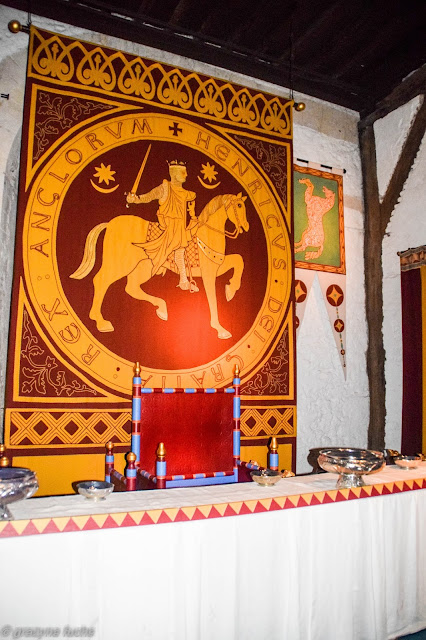Dover castle has been my dream for a long time. It was also the main point of today's day. I went to Dover to visit this magnificent Anglo Saxon Fort. I did not make a mistake. It is magnificent with an amazing view for sea full of ships, harbor and town. There is a lot to see in the castle area but tower and his kitchen impressed me the most. I spent the day walking around the hollow corridors. And I'm not sure I was in any room. Dover Castle is the oldest fort in England and has been strategic in the
countrys defence even up to and including WW1 and WW2. Originally
strengthened from an Anglo-Saxon fort in 1066 by William the Conqueror
with futher additions made by Henry II and Henry VIII.
more info; http://www.britainexpress.com/attractions.htm?attraction=80
http://www.english-heritage.org.uk/visit/places/dover-castle/history-and-stories/history/

Officers' New Barracks





 |
The Great Tower
The showpiece of Dover, the great stone keep erected by Maurice the
Engineer for Henry II is a huge cube, measuring 100 feet in each
direction, with imposing corner turrets and an elaborate L-shaped
forebuilding with a further three projecting turrets. The forebuilding
acts as a grand staircase, giving access, not to the first floor, as you
might expect, but to the second floor, where the royal hall and solar
(private apartments) are located. The forebuilding was originally
roofless, so any attackers getting inside would be subjected to a rain
of missiles thrown from the tower parapets above. At the point where the
forebuilding stair changes direction there is a small, rather ornately
carved chapel, perhaps erected as a place for more welcome guests to
give thanks for a successful journey upon arrival. The hall level is
double-height, with a gallery running around the exterior and several
small , private chambers in the thickness of the walls. In one of these
chambers is one of the most amazing - and uncelebrated - examples of
medieval engineering anywhere in Britain; a well shaft, which sinks down
fully 350 feet into the chalk beneath to reach water. To put that in
perspective, the well shaft is as deep as the spire of Salisbury
Cathedral is tall.
|




















The Queen's Chamber in the Great Tower

Great Tower kitchens

princess of Wales Royal Regiment Museum
King's Gate





































































































No comments:
Post a Comment